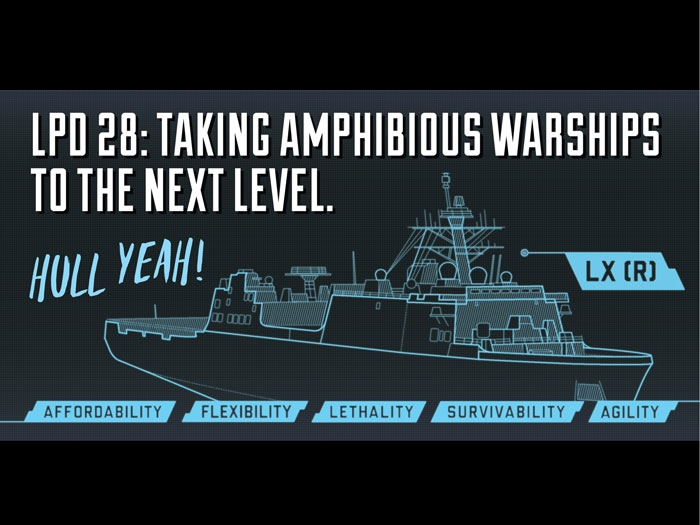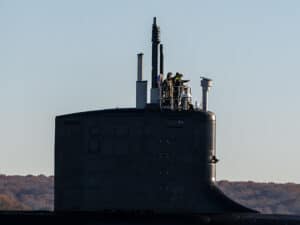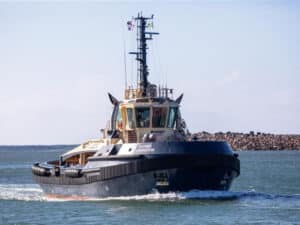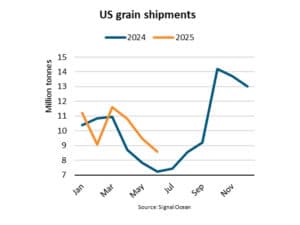
Industrial base urges earlier start of LX(R) construction
Written by Nick Blenkey
FEBRUARY 6, 2016 — Underscoring the point that Navy shipbuilding decisions are made on Capitol Hill as much as in the Pentagon, a coalition representing industrial base suppliers to the Navy’s amphibious warships construction program have written urging Congress to fund the next generation LX(R) class in FY2017 so that construction can start in FY2018, rather than FY2020, as currently planned by the Navy.
The Amphibious Warship Industrial Base Coalition (AWIBC) says in its letter that accelerating and optimizing the start of LX(R) construction to 2018 will minimize the production gap between LPD 28 and the first LX(R) and strengthen the amphibious warship industrial base by leveraging the many advantages offered by a hot production line and supply chain.
These advantages include acquisition and life cycle cost savings through production learning; batch buying of material; mitigation of nonrecurring costs; and reuse of logistics support, training, maintenance, and outfitting products.
Following is the text of the letter:
February 4, 2016
Dear Congress:
The companies from 44 states that provide parts and products for the construction of U.S. Navy amphibious warships are grateful to Congress for authorizing and appropriating funding in fiscal year 2016 for the next San Antonio-class amphibious warship, LPD 28, as well as advance procurement funding for the next generation of amphibious warships, LX(R).
These actions reaffirmed Congress’ dedication to the U.S. Navy-Marine Corps team to provide the strong amphibious warship fleet needed to respond to crises around the world and will help address the significant shortfall in the size of the amphibious fleet that was cited by the Chief of Naval Operations during testimony before Congress last year.
We now urge Congress to continue its strong support of U.S. Navy amphibious warships, and to build on the significant investments made in LPD 28 and LX(R), by providing funding in fiscal year 2017 so that LX(R) construction may begin in 2018.
As the House Armed Services Committee noted in its report accompanying the National Defense Authorization Act (NDAA) for 2016, “[T]he optimum construction start for the LX(R) class of vessels is in fiscal year 2018 rather than the current Navy program of record of fiscal year 2020.”
Congress affirmed this position in the final version of the NDAA.
As you know, amphibious warships make it possible for the Marine Corps to respond swiftly and aggressively to crises around the world. Specifically engineered to sail into harm’s way, these ships can hold, transport, and deploy U.S. Marines and all types of combat vehicles, helicopters, amphibious landing craft, and assault vehicles as well as V-22 Osprey tilt-rotor aircraft and the soon-to-be-delivered F-35B Joint Strike Fighter.
Accelerating and optimizing the start of LX(R) construction to 2018 will minimize the production gap between LPD 28 and the first LX(R) and strengthen the amphibious warship industrial base by leveraging the many advantages offered by a hot production line and supply chain.These advantages include acquisition and life cycle cost savings through production learning; batchbuying of material; mitigation of nonrecurring costs; and reuse of logistics support, training, maintenance, and outfitting products.
Additionally, expediting the construction of LX(R)-class ships may help reduce investment challenges beyond fiscal year 2020, which were highlighted by the Congressional Budget Office in its analysis of the Navy’s 2015 shipbuilding plan, and mitigate the risk that amphibious warships are not funded in future defense budgets.
Currently, there are only 30 amphibious warships in the U.S. Navy – eight ships below the stated U.S. Marine Corps minimum requirement – and almost a third of these are unavailable due to much-needed maintenance.
All the while, the United States increasingly relies on the Marine Corps to quickly respond to global threats and crises. Since October 2011, Navy-Marine Corps teams aboard amphibious warships have been utilized more than 80 times. In such critical times, the Marine Corps should be able to depend on being deployed aboard U.S. Navy combat ships that are ready throughout the world to respond to crises.
The Department of the Navy has chosen to utilize the LPD design for LX(R) and has stated that by starting with an LPD ship design and avoiding the extensive engineering cost of beginning with a clean sheet, the Navy saved “enough cost that we were actually able to take that money … and reinvest it into the LX(R).” The nation will save millions of dollars in life cycle support costs for LX(R) by reusing logistics support and training products that have already been bought and paid for under the LPD program.
Starting with an LPD ship design will also ensure the next class of amphibious ships can be built more affordably and without the “surprises” that often occur with a first-in-class ship, and production can commence more quickly than would otherwise be the case.
The members of the Amphibious Warship Industrial Base Coalition are proud to contribute to the construction of U.S. Navy amphibious warships, including the two newest San Antonio-class ships, John P. Murtha (LPD 26), christened in March of last year, and Portland (LPD 27), currently under construction.
We look forward to continuing our strong support of the Navy-Marine Corps team on LPD 28 and, with additional investment in fiscal year 2017 to accelerate LX(R), bridging the production gap to future amphibious warships as efficiently and affordably as possible.
Thank you again for your strong support of amphibious warships.
Please contact me with any questions you may have.
Respectfully,
Brian Schires
Rolls-Royce North America
Chair, Amphibious Warship Industrial Base Coalition





Leave a Reply
You must be logged in to post a comment.